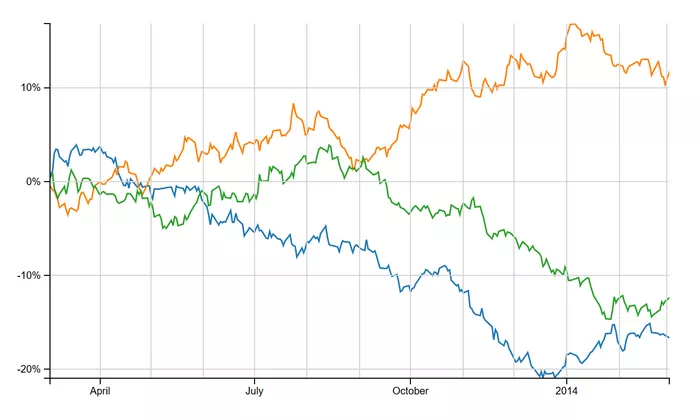The video gaming industry has become one of the most dynamic and lucrative sectors in the global economy. With an ever-expanding base of consumers, rapid technological advancements, and increased investment, gaming stocks offer a unique opportunity for investors seeking to diversify their portfolios. But how exactly does one go about purchasing gaming stocks? This guide will walk you through the necessary steps to start investing in the gaming sector and provide insights into the factors that influence these stocks.
Understanding the Gaming Industry
Before delving into the specifics of how to buy gaming stocks, it’s important to have a solid understanding of the gaming industry itself. The industry includes a wide range of companies that develop, publish, and distribute video games, as well as those that manufacture gaming hardware and accessories.
Key Segments of the Gaming Industry
Video Game Developers: These are the companies responsible for creating the games. Well-known examples include Activision Blizzard, Electronic Arts (EA), and Ubisoft.
Video Game Publishers: These companies market and distribute games created by developers. Some publishers, such as Take-Two Interactive, also develop their own games.
Gaming Hardware Manufacturers: Companies like Sony and Microsoft that produce consoles (PlayStation and Xbox, respectively) and gaming accessories.
Game Streaming and Online Platforms: Services like Twitch, Steam, and Epic Games Store have gained prominence by providing platforms for users to stream or purchase games.
Esports: The professional competitive gaming scene, which has become a significant sub-sector of the gaming industry, is booming with companies like Riot Games and Valve leading the charge.
Understanding these segments will help you make informed decisions about which companies to invest in based on your interests, risk tolerance, and financial goals.
Why Invest in Gaming Stocks?
There are several reasons why gaming stocks are an attractive option for investors:
High Growth Potential
The gaming industry is experiencing rapid growth. According to reports, the global video game market is expected to reach over $300 billion by 2025, driven by increasing mobile gaming, the expansion of esports, and the integration of new technologies like virtual reality (VR) and augmented reality (AR).
Diversification
Gaming stocks offer investors the opportunity to diversify their portfolios beyond traditional sectors like technology, finance, and healthcare. The gaming industry also operates across various platforms (consoles, PC, mobile), which provides an additional level of diversification.
Steady Revenue Streams
Successful game franchises generate steady income through multiple revenue streams, including game sales, in-game purchases, subscriptions, and merchandise. This model offers stability, especially for companies with established franchises like Call of Duty or FIFA.
Resilience to Economic Cycles
The gaming industry has shown resilience during economic downturns. While consumer spending on other forms of entertainment may drop during recessions, people often turn to video games as an affordable means of entertainment, keeping the industry relatively stable.
Steps to Buy Gaming Stocks
Now that you understand the potential and importance of investing in gaming stocks, let’s break down the steps to purchase them.
Step 1: Decide How You Want to Invest
There are several ways to invest in the gaming industry, each with its own set of advantages and risks.
Direct Investment in Gaming Stocks
The most straightforward approach is to buy shares of gaming companies directly. This method allows you to invest in well-established companies, such as:
- Activision Blizzard (ATVI)
- Electronic Arts (EA)
- Nintendo (NTDOY)
- Take-Two Interactive (TTWO)
Investing in these companies allows you to own a portion of the business and benefit from its growth and profitability.
Exchange-Traded Funds (ETFs)
For investors looking for exposure to a broader range of gaming companies, ETFs offer a diversified option. ETFs pool together shares of multiple companies within a sector. Gaming-focused ETFs include:
- VanEck Vectors Video Gaming and eSports ETF (ESPO)
- Global X Video Games & Esports ETF (HERO)
ETFs can help mitigate risk by spreading your investment across different gaming-related companies rather than relying on the performance of a single stock.
Gaming Mutual Funds
Similar to ETFs, mutual funds provide diversification but are actively managed. This means fund managers select stocks to build a portfolio that suits specific objectives, such as high growth or stability. However, mutual funds often come with higher fees compared to ETFs.
Video Game Industry Index Funds
Index funds track a broad segment of the market, such as the S&P 500 or industry-specific indices like the Video Game Industry Index, which tracks the performance of gaming stocks. They provide passive exposure to the sector with lower fees.
Step 2: Choose a Brokerage Platform
Once you have decided how you want to invest, you’ll need to choose a brokerage platform to execute your trades. There are several online brokers available, ranging from traditional firms to newer, app-based platforms.
Here are a few popular choices:
Charles Schwab: Known for low fees and a user-friendly platform.
TD Ameritrade: Offers research tools and educational resources for beginners.
Fidelity: Provides a robust set of tools for serious investors.
Robinhood: Offers commission-free trades and is more suited for beginner investors.
When choosing a broker, consider factors such as:
- Commission fees
- Ease of use
- Available tools and resources
- Customer support
- Account minimums
Step 3: Research Gaming Stocks
Before purchasing gaming stocks, it’s essential to conduct thorough research to evaluate the financial health and growth potential of the companies you’re interested in.
Key Metrics to Consider
Earnings per Share (EPS): Measures a company’s profitability by dividing its net income by the number of outstanding shares. Higher EPS usually indicates a more profitable company.
Price-to-Earnings (P/E) Ratio: The P/E ratio compares a company’s stock price to its earnings per share. A high P/E ratio might indicate that the stock is overvalued, while a low P/E ratio could suggest undervaluation.
Revenue Growth: Look for companies that consistently increase their revenue year-over-year.
Debt Levels: Companies with high levels of debt may be riskier investments, especially if they are unable to generate enough income to service that debt.
Dividend Yield: Some gaming companies pay dividends to shareholders, providing an additional income stream for investors.
Read Analyst Reports and News
Utilize resources like Yahoo Finance, Seeking Alpha, and Morningstar for in-depth analyst reports and company news. These sources provide insight into future growth prospects, risks, and industry trends.
Pay Attention to Game Releases and Industry Trends
The gaming sector is heavily influenced by new game releases, consumer sentiment, and industry trends. For example, the launch of a highly anticipated game like Grand Theft Auto V can drive substantial stock price increases for companies like Take-Two Interactive.
Stay informed about upcoming game releases, esports trends, and technological innovations like VR or cloud gaming, as these can have a significant impact on the stock prices of gaming companies.
Step 4: Execute the Trade
Once you’ve chosen a brokerage and researched your chosen stocks, it’s time to make your purchase. Log into your brokerage account and search for the stock symbol (ticker symbol) of the gaming company you want to buy. For example:
Activision Blizzard: ATVI
Electronic Arts: EA
Nintendo: NTDOY
You can place different types of orders:
Market Orders: Buy at the current market price.
Limit Orders: Set a price at which you’re willing to buy the stock.
Stop Orders: Automatically buy or sell when the stock reaches a certain price.
Step 5: Monitor Your Investment
Once you’ve bought gaming stocks, it’s important to monitor your investment regularly. Pay attention to quarterly earnings reports, news about game releases, changes in management, and any other news that could impact the stock price.
Many brokers offer portfolio tracking tools to help you stay on top of your holdings. Additionally, consider setting up price alerts to notify you when a stock reaches a specific price point.
Step 6: Consider the Long-Term
The gaming industry is expected to continue growing, but it’s also subject to volatility due to changing consumer preferences and technological advancements. As such, it’s important to view your gaming stock investments as part of a long-term strategy.
Diversifying your gaming stocks and being prepared for market fluctuations will help you weather any short-term volatility and maximize your returns over time.
Risks to Consider When Buying Gaming Stocks
While the gaming industry offers high growth potential, it’s not without its risks. Here are some factors to consider:
Competition and Market Saturation
The gaming industry is highly competitive, with numerous developers vying for attention in an increasingly crowded market. Additionally, as gaming platforms become more saturated, it may become more difficult for new games to achieve success.
Changing Consumer Preferences
Gaming trends can change rapidly. What’s popular today (e.g., battle royale games) may not necessarily be popular tomorrow. Companies that fail to adapt to new gaming trends risk losing relevance in the market.
Regulatory Risks
The gaming industry is subject to regulation in many countries, particularly regarding in-game purchases, loot boxes, and age restrictions. Changes in regulation could affect a company’s bottom line.
Technological Disruptions
Advancements in gaming technology, such as cloud gaming or VR, could disrupt existing business models and impact traditional gaming companies.
Conclusion
Investing in gaming stocks offers exciting opportunities for growth, but it also comes with risks that require careful consideration. By understanding the industry, researching individual companies, and diversifying your investments, you can position yourself for long-term success in the gaming sector.
Whether you choose to invest in individual stocks, ETFs, or mutual funds, always remember that a well-researched and disciplined approach to investing will help you navigate the dynamic and ever-evolving world of gaming stocks.
Related topics:


























